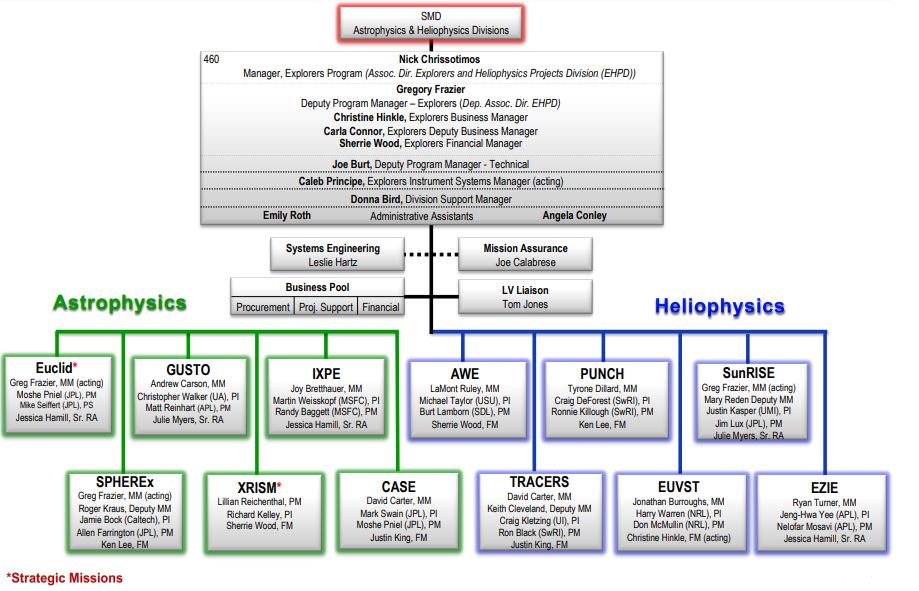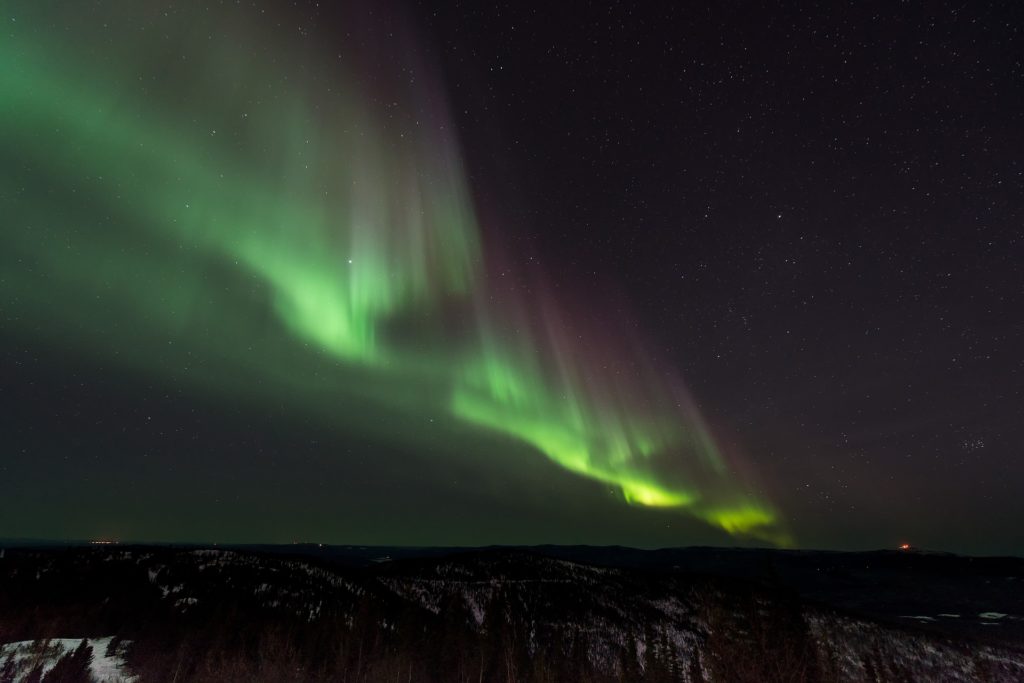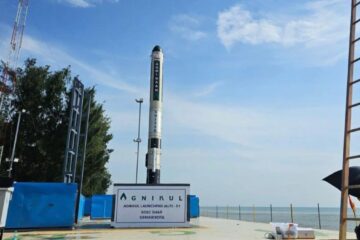NASA has come up with its latest and at the same time first of its kind mission known as the Atmospheric Waves Experiment (AWE). This project, which is slated to launch in August 2022 aims to study the space weather around the Earth. Earth’s weather is predictable as per technological advancements but in order to predict space weather, we still have many more miles to go. In this regard, NASA has taken the lead by sanctioning around US$42 million in the Atmospheric Waves Experiment to obtain global observations.
Attempt Amazon Quiz Answers Today – Win Exciting Prizes Now!
Table of Contents
Atmospheric Waves Experiment – Beginner To Winner
NASA conducts a Mission of Opportunity under the agency’s oldest and continuous Heliophysics Explorers Program (HEP). HEP aims to seek innovative ideas for small and cost-constrained missions that can help unravel the mysteries of the Universe. These small missions intend to fill the gap between the agency’s larger missions. Heliophysics is simply the physics of the Sun, it deals with how the Sun affects space and the space environment of planets. Since the Explorer 1 launch in 1958, which discovered Earth’s radiation belts, the HEP has launched more than 90 missions, including the Uhuru (SAS-A or Explorer 42) and Cosmic Background Explorer (COBE) satellites that led to Nobel Prizes for their investigators.
This time NASA had selected nine proposals under HEP to fill the aforementioned science gap to complement the larger missions. The list of these nine proposals is given below –
| Mission Name | To Study |
| Mechanisms of Energetic Mass Ejection-Explorer (MEME-X) | why planets lose their atmosphere |
| Focusing Optics X-ray Solar Imager (FOXSI) | particle acceleration and coronal heating on the Sun |
| Multi-Slit Solar Explorer (MUSE) | the dynamics of the corona and transition region |
| Tandem Reconnection and Cusp Electrodynamics Reconnaissance Satellites (TRACERS) | the origins of the solar wind and how it affects Earth |
| Polarimeter to Unify the Corona and Heliosphere (PUNCH) | how the mass and energy of the Sun’s corona become the solar wind |
| Sun Radio Interferometer Space Experiment (SunRISE) | how the Sun’s radiation affects the space environment |
| Atmospheric Waves Experiment (AWE) | the properties of global mesospheric gravity waves |
| U.S. Contributions to the Trace Habitability, Organics, and Resources (THOR) mission – (THOR -US) | finding water deep below the surface of Mars |
| Coronal Spectrographic Imager in the Extreme Ultraviolet (COSIE) | obtain wide-field images of the corona |
Know About NASA’s Earth Observation Satellites
Out of these nine, the Atmospheric Waves Experiment (AWE) was one of the two finalists selected by NASA as a Mission of Opportunity. The other finalist was Sun Radio Interferometer Space Experiment (SunRISE). SunRISE has been selected for a seven-month, US$100,000 extended formulation study to mature the mission design. SunRISE will be an array of Six CubeSats forming a constellation of spacecraft flying in a 10-km diameter formation to localize and track the radio emission associated with coronal mass ejections (CMEs). SunRISE will operate as the first imaging radio interferometer in space.

What is Space Weather?
Space weather is much more complex compared to the weather on the Earth because it’s an inclusive phenomenon. It mainly includes various conditions* on the Sun, the nature of Earth’s magnetic field and atmosphere. Interaction of these creates a solar storm / (geo)magnetic storm.
*Solar wind – a continuous stream of plasma emitted from the Sun
*Coronal Mass Ejections (CME) – billions of tons of matter released by the sun, periodically
Solar storms can severely affect our lifestyle and economy in many ways, not least of which is by affecting the Global Positioning System (GPS).
Also Check NASA’s Chandra X-ray Observatory – Know Facts, Discoveries & Contribution
Effects of Magnetic Storm Caused by Space Weather
- Increased radiation due to the solar storm may lead to increased health risks for astronauts participating in human space missions.
- For satellites in orbit, it can cause degradation of spacecraft communications, performance, reliability and overall lifetime. For example, the solar panels of a satellite − often called ‘wings’ − that convert the sun’s light energy to electrical energy onboard most spacecraft will steadily generate less power over the course of a mission, and this loss must be taken into account in designing the satellite.
- Damage to satellite navigation services which in turn can affect aviation, road transport, shipping and any other activities that depend on precise positioning.
- In the aviation sector, − commercial airlines − may also experience damage to aircraft electronics and increased radiation doses to crews in case of a large space storm.
- On-ground solar storms can damage and disrupt the power distribution networks, increase the rate of pipeline corrosion, induce effects in submarine cables and can degrade radio communications.

Atmospheric Waves Experiment – Installation & Working
For a better understanding of the mechanism and the space weather, it will be attached to the exterior of the Low Earth-Orbiting International Space Station (ISS). From the perch of the space station, it will focus on AIRGLOW, faint emission of light by a planetary atmosphere. This study will help to determine how waves in the lower atmosphere produced by changes in the density of air pockets in the upper atmosphere, which is a dynamic region, affect space weather.
Check Latest Updates on NASA’s Artemis Mission
Need for Atmospheric Waves Experiment
Earlier it was believed that only solar variability (the Sun’s constant outflow of ultraviolet light, the solar wind, etc.) drives all the changes. However, recent learning clarifies that Earth’s weather is also responsible for driving changes in the Airglow region. This Experiment will ultimately help to predict adverse space weather and mitigate its effects.
Atmospheric Waves Experiment – FAQs
AWE is a mission by NASA that will be launched to study space weather.
Space weather is a complex phenomenon that depends on various conditions such as Sun and Earth’s magnetic field and its atmosphere. Interactions of all these with each other give rise to space weather and its conditions such as a solar storm.
AWE is supposed to be launched on 1st August 2022.
Northern lights are a phenomenon observed due to the space weather.
The AWE will cost approximately US$42 million.
What Are You Interested Into?



9 Comments
Gabrielle Bochenek · March 12, 2019 at 1:33 am
NASA is really a great organization. May AWE becomes a successful mission.
Emma Love · April 2, 2019 at 8:49 am
Atmospheric Waves Experiment is not that easy to grasp but our explanation has magic. You have done a great job. This article is one of the top articles available on the net. Great blog for science and tech updates.
Jenna Berrios · March 21, 2020 at 1:20 pm
My partner and I are science freaks and absolutely love your blog and find almost all of your posts to be just amazing.
Atmospheric Waves Experiment is indeed a great experiment performed by NASA.
kate · March 21, 2020 at 2:42 pm
I’ve read several excellent stuff here. Definitely worth bookmarking for revisiting.
I surprise how a lot effort you put to create this type of magnificent informative website.
Special thanks for this article on the Atmospheric Waves Experiment by NASA.
margo2blog.site · March 22, 2020 at 8:30 pm
I have read so many articles on Atmospheric Waves Experiment but this is the best read for this topic.
keep it up.
Bolo App by Google for kids in India - STUDIOUSLY YOURS · March 11, 2019 at 7:18 am
[…] Read: Atmospheric Waves Experiment Taggedbolo […]
Current Affairs RoundUp : 11 March 2019 - STUDIOUSLY YOURS · March 12, 2019 at 5:44 pm
[…] Also Read – Atmospheric Waves Experiment (AWE) […]
Current Affairs RoundUp : 12 March 2019 - STUDIOUSLY YOURS · March 14, 2019 at 10:32 am
[…] Also Read: Atmospheric Waves Experiment […]
West Nile Virus - STUDIOUSLY YOURS · March 19, 2019 at 7:34 pm
[…] Atmospheric Waves Experiment […]